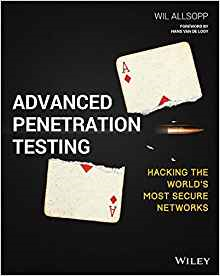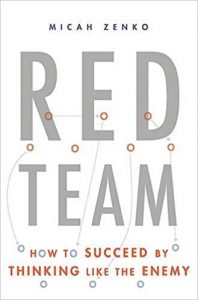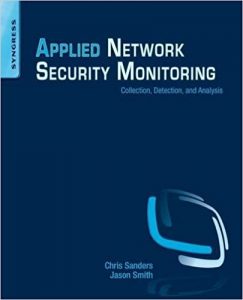Hello guys aaj Mai aapko bataunga ki Facebook par Hackǝr Naam se account kaise banaye to Dosto chalte hai Apne topic par.
Step by step:
1.Open http://facebook.com.
2.Input your id and password and press login.
3. After successful login go to your settings.
4.Change your language to Telugu.
5.After successful changing language go to General settings.
6.Click on Edit in Name section.
7.After that input "Hackǝr" in your First Name and delete your last name.
8.After that click on Submit.
9.After click on Submit your name was changed in to "Hackǝr".
Let's enjoy....
Agar Hamaya ye post apko pasand aye to comment jarur kigiyega.jisse ham aapke liye aise hi aur bhi tricks & tips late rahe.
Thank you.....
...SAMHACKERSWORLD...
This is Siddharth Kumar Mishra blog here you get everything what you want.you can learn everything free of cost.
Sunday, 18 March 2018
Facebook Par Hackǝr Naam Se Account Kaise Banaye
Saturday, 17 March 2018
Facebook Green Name Id Kaise Banaye - SAMHACKERSWORLD
Hiii Friendss aaj mai aapko bohat hi intresting Trick Batane ja rha hu.. Ki Facebook me green name id kaise banaye….aaj tak aapne sunna bhi nhi hoga ki facebook pe green name bhi rakh sakte soo aaj mai aapko bataunga ki green name id kaise banaye…Aap mere bataye huye step carefully follow kijiye aap aasani se aapke facebook id ka name green colour me rakh sakte hai..
Green name facebook id banane ke kuch advantages bhi hai aur kuch disadvantages bhi hai. wo ham abhi dekhenge ki Green Facebook Name id ke Advantages kya hai aur disadvantages kya hai. Pahle advantages jaante hai…
Advantage of Green name Facebook id
- Facebook id Green Colour me show hogi sabse uniq baat.
- Green colour id sabse ujiq hogi q ki sabke green name id nhi hote fb pr..
- Green Name id Pr click karte hi Id open ho jayegi bina kisi loading ke..
Disadvantages Of Green Name Id
- Green name only UC Browser me dikhega..
- Other Kisi Bhi Browser Me Green Name nhi dikhega..
- aur green name fb id banane ke liye niche diye huye name hi use kar sakte hai…
How to make green name Facebook Id
green name id banane ke liye aap ye step carefully follow kijiye…
Step 1:- Facebook Id UC BROWSER me login karo..
Step 2:- ab setting & privacy me jakar General pe click karo..fir name pe click karo…
Step 3:- ab aapka current name remove kardo…
Step 4:- ab aap name ke box me in name me se koi bhi ek likh do
(i) see More Stories
(ii) Next Page
(iii) Next
step 5:- ab niche aapka password dalkar setting save kar dijiye..
Ab aapka name green colour me ho gya hai ab aap check kar sakte hai ki aapka name green colour me show ho rha hai ya nhi…
NOTE:- Green colour only UC BROWSER me hi show Karega agr aap kisi other browser me check karoge to aapka name aapko simple name me hi dikhega…
Isss post se related aapke kuch question hoge to aap comment karke puch sakte hai….
FACEBOOK ME BINA NAAM (INVISIBLE) KA ACCOUNT KAISE BANAYE - SAMHACKERSWORLD
Guys aaj mai apke liye laaya hu ek bhut hi awesome trick jiski aajkal bhut demand hai
Ab ap bhi mobile se easily apni fb invisible name ki id bana sakte hai ya apni id ka naam change karke invisible kar sakte ho.....
Isse pehle apko bata du invisible name id me ham greek word ka ek asa symbol choose karte hai jise facebook support nahi karta or usi symbol ko ham apne fb name me rakhte hai or wo. Symbol fb support ni kar pata isliye hame name ki jagah pe koi name show ni hota.....
Invisible name id banana bhut easy hai or ap ase hi unlimited account bhi bana sakte ho..
To aaiye apka jyada time waste naa karke trick ki taraf chalte hai....
Sikhte hai invisible name ka new account kaise banaye:-
1- sabse pehle fb sign up page par jaye
Sign up
2- ab jo symbol bracket ke andar hai (ՙՙ) ise copy karke is trah sign up page me paste kare....
3- ab sign up par click kare.....or apne is account ko facebook app me login kare....
4- ab ap dekhenge ki apka name invisible ho chuka hai
Enjoy......
Visit daily
SAMHACKERSWORLD
Friday, 16 March 2018
The Best Hacking Books 2018
One of the most popular and most asked questions since I’ve started this blog is if I can recommend some good hacking books to read for beginners and more experienced hackers and penetration testers. In this article I want to highlight some hacking books and InfoSec books that I personally liked that cover subjects such as ethical hacking, penetration testing, web application penetration testing and other InfoSec related subjects. In addition to college degrees, certifications, hacking courses, taking up challenges and practical training, books are an invaluable source of information to keep your knowledge up-to-date and acquire new skills. Whether you’re a beginner in the field of InfoSec or a seasoned professional, mastery of new skills will open up many doors and allow you to progress in your career faster.
The secret of becoming a (better) penetration tester, bug bounty hunter or IT professional is to not only focus on penetration testing books but also read books on related subjects such as: Networking, programming, exploit development, web applications, network security monitoring and other IT subjects. Having at least a little theoretical knowledge about these subjects helps you a lot to look at information security from different angles and perspectives. For this reason I will not only listhacking books in this article but also books on related subjects that I deemed important enough to read. In my opinion every serious IT professional should be reading at least a book per month and I hope that this article will help you discover your next InfoSec book to read.
Please note that the listings of the books is not a ranking but a mere overview of hacking books that I recommended. This article will be updated with new books on a regular basis. Would you like to see a specific book added to the list or even your own book? Please leave a comment below and I will add it to the list.
Penetration Testing: A Hands-On Introduction to Hacking

The first book I would like to recommend is a hacking book that has helped many people to make their first steps into ethical hacking and penetration testing. Penetration Testing: A Hands-On Introduction to Hacking is written by Georgia Weidman and is a good book for anyone new to the subjects as it generally focuses on beginners. The author of this book covers many different subjects such as setting up a lab to enumeration, exploitation, mobile hacking and a lot more. What I personally like about this book is that the author explains every step in the process in detail and also relates it to her wide experience in the field as a penetration tester. So if you’re new to penetration testing without prior experience, this book is a great place to start an exciting journey!
According to the author on Twitter she’s currently writing an updated V2 version of this book, follow her for updates!
The Web Application Hacker’s Handbook: Finding and Exploiting Security Flaws 2nd Edition
 This fantastic web app hacking book is a must read for anyone that is interested in web application penetration testing and covers everything you need to know about this subject. The Web Application Hacker’s Handbook: Finding and Exploiting Security Flaws 2nd Edition is written by the founder of Portswigger which is the company behind the popular security testing & scanning tool called Burp Suite. This book teaches you step by step how to test the security of web applications from start to finish. One thing I particularly like about this book is that it explains different web technologies, how to exploit them and how to defend against the attack in particular. Furthermore this book covers the very basics a web application penetration tester needs to know in depth, such as how the HTTP protocol works in order to get a better understanding of communications between a webserver and visitor which helps in understanding attacks and defence.
This fantastic web app hacking book is a must read for anyone that is interested in web application penetration testing and covers everything you need to know about this subject. The Web Application Hacker’s Handbook: Finding and Exploiting Security Flaws 2nd Edition is written by the founder of Portswigger which is the company behind the popular security testing & scanning tool called Burp Suite. This book teaches you step by step how to test the security of web applications from start to finish. One thing I particularly like about this book is that it explains different web technologies, how to exploit them and how to defend against the attack in particular. Furthermore this book covers the very basics a web application penetration tester needs to know in depth, such as how the HTTP protocol works in order to get a better understanding of communications between a webserver and visitor which helps in understanding attacks and defence.
Advanced Penetration Testing: Hacking the world’s most secure networks
 If you have read my blog before or follow me on Twitter you would know that I’m a big fan of this book. In 2017 I have read this book and wrote a book review article here on Hacking Tutorials. This book might not be the first book for beginners to read although it puts everything you read about penetration testing in the right perspective. In this book the author covers complex attack simulation and Advanced Persistent Threat (APT) modelling featuring techniques that are way beyond using Metasploit and vulnerability scanners. IT covers subjects such as social engineering, highly secured networks, malware, creating and setting up C2 servers and C&C structures and even advanced data exfiltration techniques. Each chapter describes APT modelling against an organization in a specific industry such as a hospital, pharmaceutical company or bank. The break down in industry also gives the reader a clear view how specific industries have different assets to protect, how they are protected and by who. Finally the author is a very experienced penetration tester/red teamer so the examples and context of the scenarios provided in the book come straight from the field. MUST READ!
If you have read my blog before or follow me on Twitter you would know that I’m a big fan of this book. In 2017 I have read this book and wrote a book review article here on Hacking Tutorials. This book might not be the first book for beginners to read although it puts everything you read about penetration testing in the right perspective. In this book the author covers complex attack simulation and Advanced Persistent Threat (APT) modelling featuring techniques that are way beyond using Metasploit and vulnerability scanners. IT covers subjects such as social engineering, highly secured networks, malware, creating and setting up C2 servers and C&C structures and even advanced data exfiltration techniques. Each chapter describes APT modelling against an organization in a specific industry such as a hospital, pharmaceutical company or bank. The break down in industry also gives the reader a clear view how specific industries have different assets to protect, how they are protected and by who. Finally the author is a very experienced penetration tester/red teamer so the examples and context of the scenarios provided in the book come straight from the field. MUST READ!
The Shellcoder’s Handbook: Discovering and Exploiting Security Holes 2nd Edition
 Written by the ultimate group of top security experts this book covers everything you need to on how to find security holes in operating systems and applications. You’ll work with the basic building blocks of security bugs, assembler, source code, the stack, the heap, and so on. The prerequisites of this book require you to have basic programming knowledge and understanding of IT concepts but in my opinion this is not enough. This books is expertly written without much introductions or basics which makes this book a pretty hard one to read and definitely not a joke. If you have a good understanding of programming concepts, x86, assembly, exploit development and want to learn more about various types of advanced exploits like stack overflow, heap overflow and exploit development, Return Oriented Programming, Fuzzing, ASLR/DEP handling and a lot more, this book is for you. If you have less technical knowledge and you’re a beginner on these subjects you’ll probably end up researching a lot of this stuff as a side effect of reading this book (which is not a bad thing though!).
Written by the ultimate group of top security experts this book covers everything you need to on how to find security holes in operating systems and applications. You’ll work with the basic building blocks of security bugs, assembler, source code, the stack, the heap, and so on. The prerequisites of this book require you to have basic programming knowledge and understanding of IT concepts but in my opinion this is not enough. This books is expertly written without much introductions or basics which makes this book a pretty hard one to read and definitely not a joke. If you have a good understanding of programming concepts, x86, assembly, exploit development and want to learn more about various types of advanced exploits like stack overflow, heap overflow and exploit development, Return Oriented Programming, Fuzzing, ASLR/DEP handling and a lot more, this book is for you. If you have less technical knowledge and you’re a beginner on these subjects you’ll probably end up researching a lot of this stuff as a side effect of reading this book (which is not a bad thing though!).
Red Team: How to Succeed By Thinking Like the Enemy

Red Team: How to succeed by thinking like the enemy is written by national security expert Micah Zenko. In this book the author provides in-depth information about the work of red teams, how they operate, the best practices and most common pitfalls, and effective applications of the modern-day Devil’s Advocates approach. At first you might be wondering why I list this book in a hacker/InfoSec book overview as this book does not cover any technical subjects or red teaming tools. But, when you’ve read this book you’ve learned how best practices of red teaming can yield impressive results by thinking like the enemy and considering alternate analysis to reveal weaknesses in systems and processes. What I also like about this book is that the author covers many business scenarios and shortcomings from his experience that anyone who has worked in mid-size or large organizations can relate to. The book also includes a lot of examples of effective and ineffective red teaming exercises and a clear lessons learned review from these exercises. So if you’re looking for a great introduction to red teaming and you’re interested in the history of red teaming, the theory behind it, best practices and pitfalls, critical thinking and alternate analysis, and how to operate red teams, this book is a must read.
Web Hacking 101
 Web Hacking 101 is written by Peter Yaworski (with a foreword by HackerOne Co-Founders Michiel Prins and Jobert Abma) and explains common vulnerabilities found in web applications using publicly disclosed vulnerability reports on bug bounty programs. The book covers vulnerability reports on Cross site scripting (XSS), Cross site request forgery (CSRF), Remote Code Execution (RCE) and many more vulnerability types. Each report is analysed by the author and includes details about the vulnerability, a clear description and the reward that was paid. With this book you won’t just learn about the vulnerabilities and how they were exploited but also their context, the impact and how to recognize them on your own bug bounty hunts. Finally the book also provides an overview of bug bounty platforms, tools, blogs and some cheat sheets to get started with bug bounty hunting right away. The book is available at Leanpub.com for as low as $9.99 which is a great value for the money.
Web Hacking 101 is written by Peter Yaworski (with a foreword by HackerOne Co-Founders Michiel Prins and Jobert Abma) and explains common vulnerabilities found in web applications using publicly disclosed vulnerability reports on bug bounty programs. The book covers vulnerability reports on Cross site scripting (XSS), Cross site request forgery (CSRF), Remote Code Execution (RCE) and many more vulnerability types. Each report is analysed by the author and includes details about the vulnerability, a clear description and the reward that was paid. With this book you won’t just learn about the vulnerabilities and how they were exploited but also their context, the impact and how to recognize them on your own bug bounty hunts. Finally the book also provides an overview of bug bounty platforms, tools, blogs and some cheat sheets to get started with bug bounty hunting right away. The book is available at Leanpub.com for as low as $9.99 which is a great value for the money.
Applied Network Security Monitoring: Collection, Detection and Analysis
 Applied Network Security Monitoring is a great practical guide into Network Security Monitoring (NSM) that covers the subject from the ground up. This great book helps you to become an NSM analyst and teaches the key concepts of NSM accompanied by many practical tutorials and real life examples. Applied Network Security Monitoring is one of the best books I’ve read on this subject so far. The authors of the book, Chris Sanders & Jason Smith, are very experienced in the field on Network Security Monitoring and also know how to teach it to others in a way that is very attention holding and easy to understand if you’re new to the subject. They almost make NSM look easy! The author also offers online courses and training on his website that are definitely worth checking out (See training section on Chris Sanders website).
Applied Network Security Monitoring is a great practical guide into Network Security Monitoring (NSM) that covers the subject from the ground up. This great book helps you to become an NSM analyst and teaches the key concepts of NSM accompanied by many practical tutorials and real life examples. Applied Network Security Monitoring is one of the best books I’ve read on this subject so far. The authors of the book, Chris Sanders & Jason Smith, are very experienced in the field on Network Security Monitoring and also know how to teach it to others in a way that is very attention holding and easy to understand if you’re new to the subject. They almost make NSM look easy! The author also offers online courses and training on his website that are definitely worth checking out (See training section on Chris Sanders website).
Furthermore the book is divided into three primary sections (Collection, Detection, & Analysis) that takes you through all stages of the NSM process. Each sections contains practical examples and hands-on coverage of the tools needed which makes it very easy to learn the practical side of NSM alongside reading the book. The book provides thorough hands-on coverage of Snort, Suricata, Bro-IDS, SiLK, PRADS, and many others tools.
More Hacking Books
In the upcoming weeks I will update this article with new books I’ve read that I can recommend to hackers and pentesters. If you would like to suggest a specific book to read and review, please leave a comment so that I can look into it.
Friday, 2 March 2018
20 Free PHP Open Source Social Networking Scripts
Social Networking had forever been a chief idea of human relationships and it existed since time long time. However the world woke up and had a notice on it only with the inception of popular sites like Twitter,Facebook, Orkut and MySpace. Since then people wanted to add their own features on such network and there emerged exciting tools like Ning, CollectiveX and Snappville. But then we know web industry is demanding so we all wanted to have more control over domain, branding, design and database. With that in mind this amazing thing introduced Open Source Social Networking Script.
Here i’m going to share top 20 Free PHP Open Source Social Networking Scripts that can help you build your own network in no time!
Top 20 Open Source Social Networking Scrips:
Affelio – Affelio Open-source social networking software can be availed at SourceForge which is among largest open source software provider. It helps people to build cool stuff and share it with a global audience. Distributed architecture, Internet-wide scalability, highly customizable is few among the key features.
AROUNDMe – AROUNDMe is little different, here you do not create your own social network site but helps building your own collective service that permits your user to make their network and group. AROUNDMe is fully customizable with XHTML, CSS, PHP, and JAVA.
Anahita Social Engine – Anahita is scalable social networking software that is built as Joomla extensions with Nooku framework. Some of the outstanding features would include fully customizable, follows Google Open Social Standards and works with Amazon Cloud storage.
AstroSPACES – AstroSPACES open-source social networking application is written in PHP and utilizes the Smarty Template Engine. Being a great open source, it is very customizable. In fact it is the first open source social networking script introduced across the web.
BuddyPress – BuddyPress is a great packaged collection of plugins and themes for buiding up a social network service around an installation of the well-known open source blog engine WordPress MU.
Community Engine – CommunityEngine is a free, open-source social network plugin for Ruby on Rails applications. Drop it into your new or existing application, and you’ll instantly have all the features of a basic community site. Clippings, Photo uploading and tagging, Private messaging, Private messaging and forums are basic features.
Dolphin – Dolphin Smart Community Builder is universal open source software that allows you to build any kind of online community. With a huge variety of features & options, you can quickly launch your own very unique and successful website.
Elgg – Elgg empowers individuals, groups and institutions to create their own fully-featured social environment. Elgg was awarded with the best open source social networking site last year and since then the usability of this software was even augmented. This piece of software will offer you almost everything that you need to build and manage a social network.
iSocial – iSocial social networking CMS software allows you to create your own Friendster and Orkut like sites. Use bookmarks, dating and create groups with just one mouse click.
Insoshi – Insoshi is one of the new open source social networking software that is build on Ruby on Rails released this April. Basic features are well integrated and free open source plan is available.
kickapps – KickApps provides brands, enterprises and web publishers with solutions that enable them to create and manage next generation web experiences that are social, interactive, dynamic, distributed, and data-informed. With KickApps you can build your own community with social networking and photo & video sharing, widgets, custom video players and much more.
Lovd by Less – Lovd by Less is among few open source social networking platform written in Ruby on Rails. You will find most of application ready with Lovd by Less that is needed. Flickr and YouTube are integrated with the software. If you are not a PHP lover then Lovd by Less is your option.
Mahara – Mahara is an open source social networking plus ePortfolio web application. You can create and maintain a digital portfolio of their learning, and great social networking features to interact with each other. Blogs, resume builder, file manager and view creator are key features of Mahara to help you create arrangements of content in a particular way for others to see.
Mixxt – Mixxt open source helps you build own social network fast. Features included are quite powerful. You can choose from many Community functions such as Forum, images, events & wikis.
Mugshot – Mugshot is a Java based software developed last year. It is sponsored by Red Hat and allows users to pull together all online activity at one place. Mughots integration with music sites like iTunes, Rhapsody, Yahoo! Music, and others are key features.
ODS – OpenLink Data Spaces (ODS) is a Distributed Collaborative Web Application Platform, Social Network, and Content Management System, written using VSP, VSPX, and the OpenLink AJAX Toolkit, atop OpenLink Virtuoso. It incorporates a broad range of industry standards for data access and data management.
OpenQabal – OpenQabal open-source social-networking and collaboration platform is driven by the principles of federation, composition, and openness; with a unique highlighting on enabling “distributed conversations”. Basically written in Java and interoperate readily with other applications which are built on open standards such as RSS, XHTML, Web Services, WS-Trust, WSDM, WSRF, and more.
OpenPNE – OpenPNE is a Social Networking Service Engine written in PHP. It carries many features such as friend control, friend invitation, diary, blog feeds, message box, and more.
Phpizabi – PHPizabi open source social networking site comes with is great features for creating & managing basic-to-advanced communities. However, it works superb with small network and may have problem building up big network.
Xoops – Xoops is another well-known extensible CMS allowing you to build social network based on your needs. Starting a personal blog and then expanding it to social network is possible via various modules. Xoops uses Yogurt module to create site with many exciting features. Both Xoops and Yogurt are written on PHP and also goes with LAMP.



